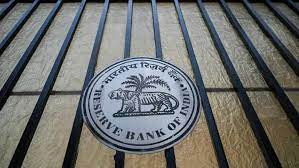Overseas Remittances by Indians Under LRS Drop 29% in February to $1.96 Billion: What’s Behind the Decline

IIE DIGITAL DESK : February 2025, outward remittances under India's Liberalised Remittance Scheme (LRS) experienced a significant decline, falling by 29% year-on-year to $1.96 billion. This downturn follows a trend observed earlier in the fiscal year, where remittances had already decreased by 10.15% during the April–December 2024 period. Several factors have contributed to this reduction, including policy changes, economic conditions, and shifting spending patterns among Indian residents.
The LRS, introduced by the Reserve Bank of India (RBI) in 2004, allows resident individuals to remit up to $250,000 per financial year for permissible current or capital account transactions. These include international travel, education, medical treatment, maintenance of close relatives, gifts, donations, and investments in equity and debt instruments. The scheme has facilitated increased cross-border financial transactions over the years, but recent data indicates a shift in remittance behaviors.
One of the primary reasons for the decline in remittances is the introduction of the Tax Collected at Source (TCS) on overseas tour packages. Implemented in October 2023, this policy mandates a 20% TCS on international travel expenses, except for education and medical treatment. The additional tax burden has led to a decrease in travel-related remittances, which constitute a significant portion of LRS transactions. For instance, in the first quarter of FY25, international travel remittances dropped by 6% year-on-year to $3.8 billion. Similarly, in June 2024, travel-related remittances fell by approximately 44% compared to the previous year.
Another contributing factor is the reduction in remittances for the maintenance of close relatives, which declined by 37.17% year-on-year to $1.92 billion in the first half of FY25. This decrease may be attributed to improved domestic economic conditions in India, reducing the financial dependence of relatives abroad. Additionally, the global economic uncertainty and inflationary pressures have led individuals to reassess their financial commitments, including remittances.
Remittances for gifts and donations have also seen a decline, with gifts falling by 21.38% to $2.22 billion and donations decreasing by 3.6% to $4.29 million in the first half of FY25. These reductions reflect a broader trend of tightened personal finances and a shift towards more essential expenditures.
Despite the overall decline, there has been an increase in remittances for investments in equity and debt instruments, rising by 2.09% year-on-year to $1.11 billion. This uptick suggests a growing interest among Indian residents in diversifying their financial portfolios and seeking opportunities in global markets.
The 29% year-on-year decline in outward remittances under the LRS in February 2025 is a multifaceted issue influenced by policy changes, economic conditions, and evolving financial priorities among Indian residents. While the reduction in remittances may have implications for sectors reliant on these funds, it also indicates a shift towards more strategic financial planning and investment behaviors. As the global economic landscape continues to evolve, it will be essential to monitor these trends and their potential impacts on both the Indian economy and the recipients of remittances abroad.
You might also like!
















